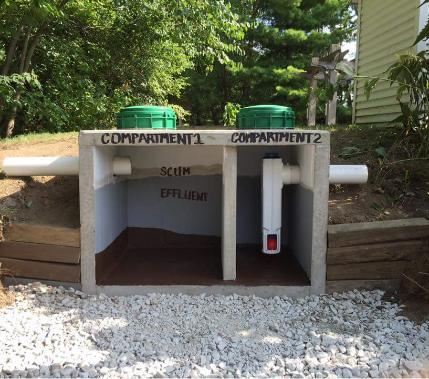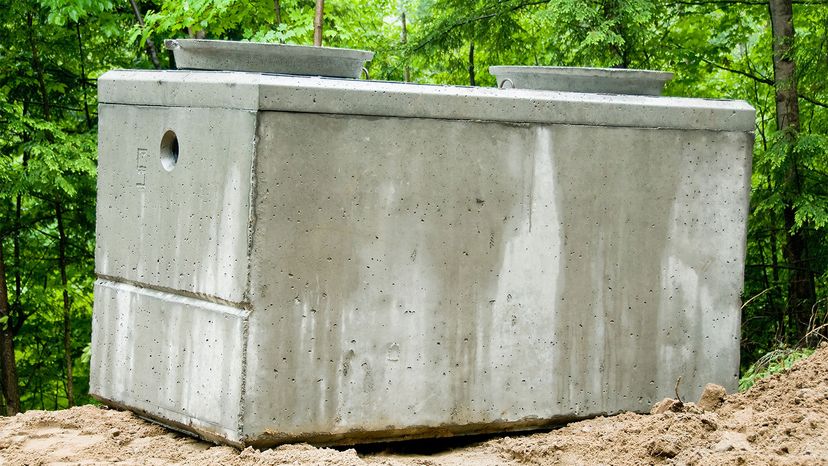How A Septic Works
What's Next For Septic Tank Technology In The Future?Rural areas might be unable to access sewer systems for municipal use. You'll need a private water treatment facility to treat and dispose of the waste. This is why those who reside in areas that are small or do not have access to municipal sewage systems must get one installed before they move. There are a variety of options for home septic tanks. However, all of them do the same thing: they remove garbage from our homes and then remove undesirable substances before discharging pure water into the surface water. Costs are influenced by the size and capacity of the tank. The larger tanks are able to reduce the amount of work needed due to less liquid being generated each day than smaller models.
How Much Does An The Septic System Cost?
The traditional Septic tanks are an outdated system that doesn't function effectively nowadays. The average US homeowner will pay between $2,500 and $5K to purchase a septic tank, without considering permits and the cost of piping your drain field. Consider the advantages and disadvantages of each kind of anaerobic or aerobic Septic system, if budget is not an issue. An alternative would be buying one of these modern machines called "septic systems". These are costly at first but they last for decades and do not require maintenance.
Aerobic systems require oxygen, which accelerates the decomposition process and produces considerably cleaner wastewater than their equivalents. In fact, the effluent is treated so efficiently that you can even make use of it to water your garden (provided there isn't another source available). Anaerobic aliments take up less space and require approximately half of the surface area of the leach field area than conventional systems. But they are more costly, with an average of 13000 USD per gallon of treated water annually. Check out the best how does a septic system work? for examples.

What Is The Cost Of A Septic System?
Most affordable and lightest option for septic tanks is plastic polyethylene. The average cost for a thousand-gallon tank is around 1150 dollars, but the use of these tanks can cause issues when it comes to leaking under pressure in certain states in the US which have banned them due to cracked tanks leading to expensive repairs later on the road, thereby compromising money on the installation cost itself! Solid concrete septic tanks is durable and can last for a long time before it has replacement. There are instances where the tanks break. But cracks aren't usually severe. Fiberglass septic tank are an excellent option for homeowners who wish to cut costs but still require a straightforward procedure. Fiberglass tanks are less heavy than plastic or concrete tanks, which can make it difficult to set up in tight areas. This means less strain weighing your home down, which translates to better quality construction overall and all for no additional cost when compared with other tanks out there in the present (such as stainless steel).
What Does This Mean To Me?
It can be confusing to understand the various factors that impact the price of your septic tanks. The first step to making a decision about your septic tank cost is to identify the different alternatives available and the amount each one will cost. NexGen Septics' experts have made it easy! We offer comprehensive information on everything, from preparation of soil to the cost of maintenance. Each of these aspects are important in determining the price of installing new systems. Have a look at the top how does a septic tank system work for examples.

Different Types Of Septic Systems
The decision of which septic system to choose is hard. The kind of system you choose will have an impact on the cost and the treatment procedure. It will also determine whether your home has enough space to accommodate it. These are the most widely used kinds.
1.) Anaerobic Septic System
A septic tank does not require electricity to operate. Anaerobic bacteria are used to clean and eliminate pollutants from water pipes until they are depleted. Then, they draw these out of other sources like plumbing fixtures or human excrement. They can be installed and will cost you anywhere between $2k and $5K depending on the model you select. It's simple to install and anyone who has completed any kind of home repairs should be comfortable with it.
2.) Aerobic Septic System
Aerobic systems utilize aerobic bacteria in order to displace waste from the septic tank. To improve this process, a motor and timer are combined with effluent to ensure more efficient treatment of wastewater without letting it overflow onto your lawn or crop like anaerobic tanks would without proper installation procedures by companies like us! These toilets are much less costly than pit toilets that are traditional and only require one ton per year.
Septic Tank Types
In addition, there are three types of septic tanks that are available: concrete plastic gravel, and concrete. In addition, there are fiberglass-based septic tanks. They are light yet strong enough to stand up to harsh conditions such that it is used on farms and other locations where water pumps can move around. Concrete is another choice because of its weight which ensures stability and doesn't tip your home over when it's submerged by rainwater. The lightweight, yet strong polyester bags are an excellent option for those who live close to the city limits. See the best how a septic works for examples.

Plastic Septic Tanks
While septic tanks are the best way to handle your waste, you need to make sure you get one that lasts. Polyethylene is the tiniest and least expensive type of septic tank you can purchase. They're also likely going break or break at some point though! Toilets made of polyethylene are more durable than ever thanks to new plastics. However, if they're not filled correctly, they might be banned in some areas such as California. The cost for 1000-gallon models differs based on the area you want to install.
Fiberglass Septic Tanks
Fiberglass tanks weigh less than the other types, easier to install , and less prone to the growth of algae. Fiberglass septic tanks are also resistant to shrinking and expanding, which keeps fractures from forming inside the tank as time passes. This is different from porous materials such as clay-based soil systems. The cost of fiberglass will vary based on how large you are and the size of your tank, but typically they cost between $1600 and $2000 USD for 1,000 gallons to 1 500 gallons. An option with greater capacity is offered which will cost you around 50%-100 percent.
Concrete Septic Tanks
Concrete septic tanks are able to last for 30 years if they are well constructed. For 1,000 gallons of water, the cost is $1,200. A 1500-gallon model runs about $1 800. Concrete tanks can last between 15 and 20 years. However, depending on how well maintained it can last longer.